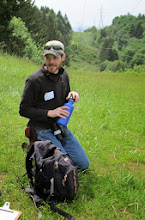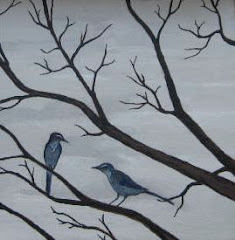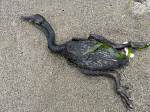
Near the apartment, I have found mourning doves and American robins nesting on man-made structures with varying amounts of success.
 This robin nest nest near the management office already had a huge nestling inside when I found it.
This robin nest nest near the management office already had a huge nestling inside when I found it. This robin nest was nicely nestled on top of a vine-covered pillar, but it appears to have failed, as I only saw the female on the nest on one occasion.
This robin nest was nicely nestled on top of a vine-covered pillar, but it appears to have failed, as I only saw the female on the nest on one occasion.Another species that gets a boost from humans is the barn swallow. I have never seen a barn swallow nest built on a natural substrate, such as a cliff or cave wall.

Instead, the nests I find are built under awnings,

on top of light fixtures,

and, of course, in barns.

Around here, barn swallows usually put there nests in buildings near open areas such as grassy parks were they fly low and skim insects from the top of the turf.
As I have mentioned earlier, I rarely find an unsuccessful barn swallow nest. Perhaps their pre-euroamerican populations were limited by nest sites and not nest predation, unlike other open cup-nesting birds. We are not swimming in barn swallows, so some other mechanism may have stepped up to limit population size. My guess is that there is high mortality of adults or juveniles during the post-nesting, migration, or winter seasons due to competition for resources such as flying insects.






No comments:
Post a Comment